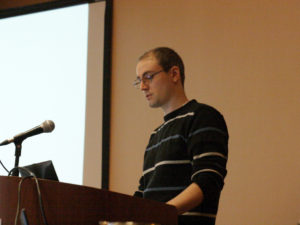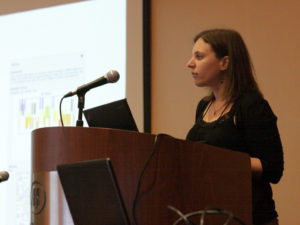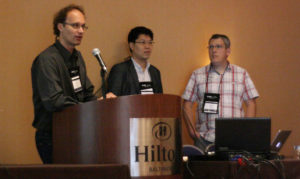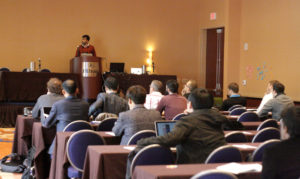Our last post was about presentations at IEEE VIS 2016 in Baltimore. Apart from the already mentioned publications, there were more presentations by SFB-TRR 161 scientists at the conference:
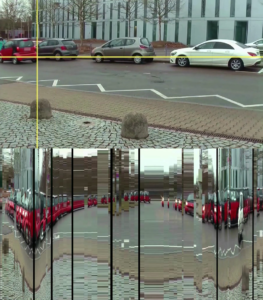
Kuno Kurzhals presented a new method for visually analyzing eye tracking data during the ETVIS workshop. ‘Visualizing Eye Tracking Data with Gaze-Guided Slit-Scans’ is the title of his work, that demonstrates a new visualization technique that uses vertical and horizontal scanlines cut from the video, that had been watched by the participants of an eye tracking study. With his slit-scan technique, compact representations can be created, even for long timespans of recorded material. Another contribution to this workshop was presented by Rudolf Netzel. He talked about his paper ‘Hilbert Attention Maps for Visualizing Spatiotemporal Gaze Data’, that presents a 2D visualization for eye tracking data from individual participants or large groups of participants. Multi-Similarity Matrices of Eye Movement Data was the talk by Ayush Kumar, and the result of his research stay in Stuttgart this summer. He presented a matrix-based visualization technique for algorithmically and visually comparing metrics in eye movement data.
As part of the VAST session, there was a further presentation by Kuno Kurzhals about his paper Visual Analytics for Mobile Eye Tracking, and Tanja Blascheck showed her results on Visual Analysis and Coding of Data-Rich User Behavior.
During the InfoVis track, Rudolf Netzel presented An Evaluation of Visual Search Support in Maps, which compares different variants of map annotations with labels.
Furthermore, the paper Molecular Surface Maps by Florian Frieß, as well as Progressive Direct Volume-to-Volume Transformation by Steffen Frey were presented.
Several of these results will be published in the TVCG-Journal that is supposed to be available at the beginning of next year.

